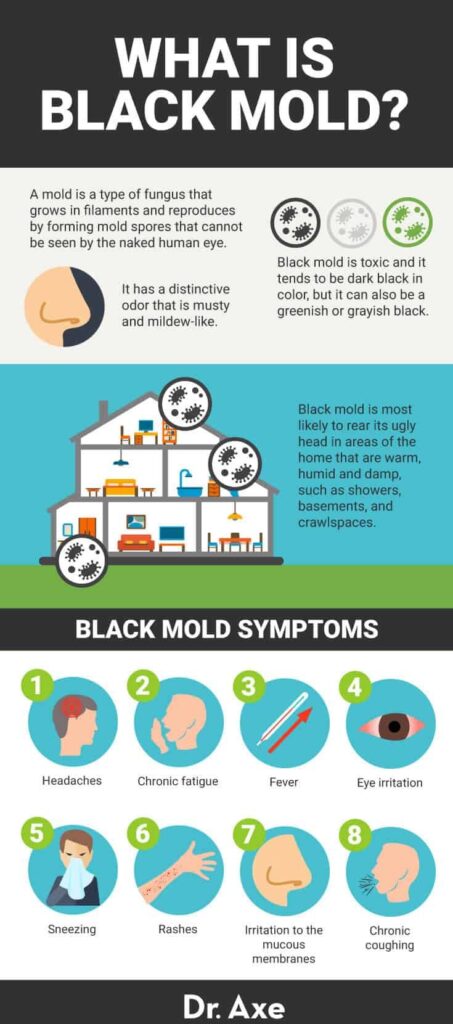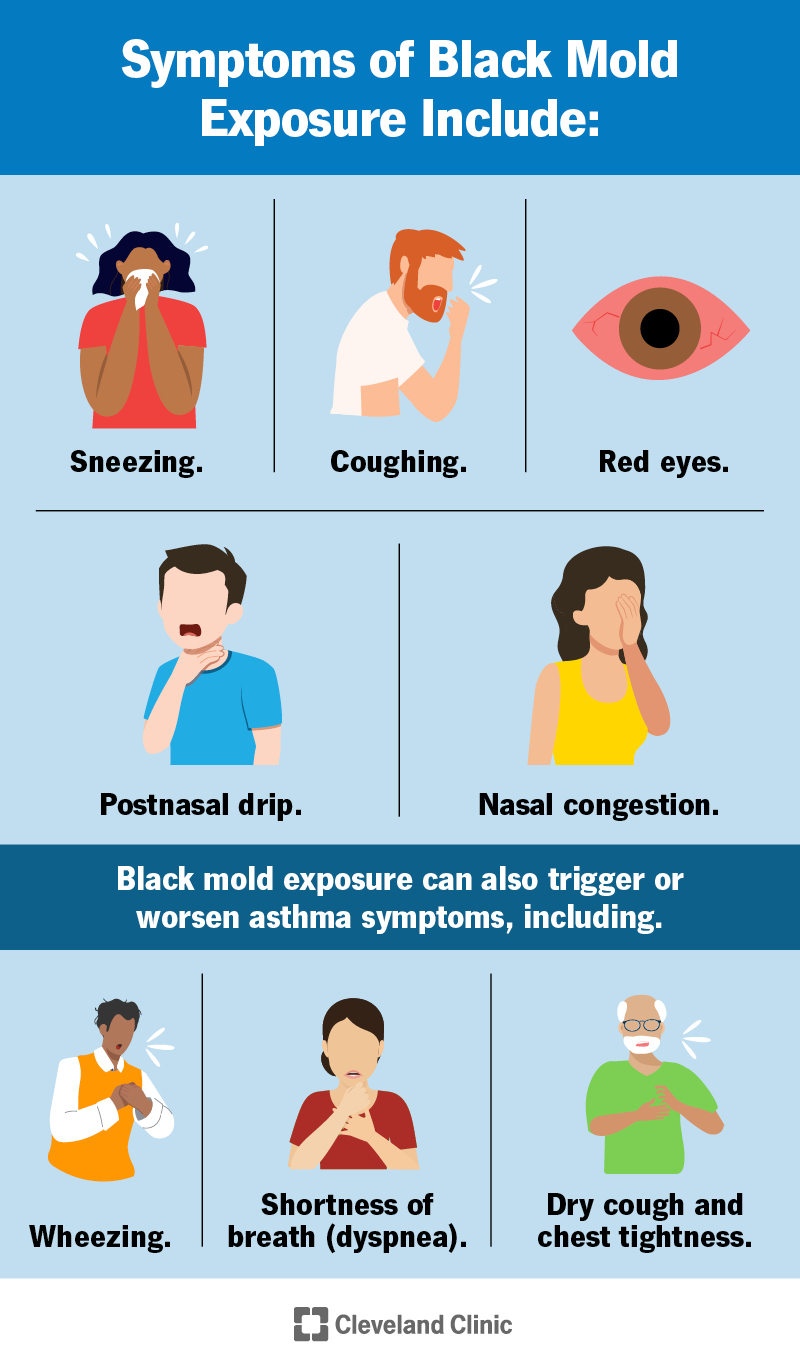If you’ve ever been curious about the health effects of mold spore exposure and how to prevent them, look no further. This article delves into the symptoms of mold spore exposure, highlighting the potential risks to your health. Additionally, it provides valuable tips on how to prevent mold growth and ensure a healthy living environment. So, whether you’re dealing with mold in your home, workplace, or any other space, this article is here to help you stay informed and take proactive measures.
Symptoms of Mold Spore Exposure
Respiratory Symptoms
When you are exposed to mold spores, one of the most common symptoms you may experience is respiratory issues. These can include coughing, wheezing, shortness of breath, and a tightness in your chest. You may also notice an increase in mucus production and nasal congestion. These respiratory symptoms can be particularly problematic for individuals who already suffer from respiratory conditions such as asthma or allergies.
Skin Symptoms
Exposure to mold spores can also lead to various skin symptoms. You may notice that your skin becomes itchy, red, or develops a rash. Some people may even experience hives or swelling. These skin symptoms can be itchy and uncomfortable, and if left untreated, they may worsen over time.
Allergic Reactions
Mold spore exposure can trigger allergic reactions in many individuals. If you are allergic to mold, you may experience symptoms such as sneezing, runny nose, itchy eyes, and even a sore throat. These allergic reactions can be similar to those experienced during hay fever season, but they may persist for longer periods of time if the mold exposure continues.
Neurological Symptoms
In some cases, exposure to mold spores can affect your neurological system, leading to various symptoms. You may experience headaches, dizziness, difficulty concentrating, and even memory problems. These neurological symptoms can be quite debilitating and may significantly impact your daily life and overall well-being.
Digestive Symptoms
Some individuals may experience digestive problems as a result of mold spore exposure. You may notice an increase in diarrhea, stomach ache, or even vomiting. These digestive symptoms can be accompanied by a general feeling of discomfort and can disrupt your normal eating patterns.
Eye Symptoms
If you come into contact with mold spores, it is not uncommon to experience eye symptoms. Your eyes may become red, watery, and itchy. You may also have blurred vision or feel a burning sensation in your eyes. These eye symptoms can make it difficult to focus and can be quite bothersome.
Immune System Response
Exposure to mold spores can also trigger an immune system response in your body. You may notice an increase in your body’s production of histamine, which can contribute to allergy-like symptoms. This immune system response can lead to a general feeling of malaise, fatigue, and weakness.
Fatigue and Weakness
One of the less obvious symptoms of mold spore exposure is fatigue and weakness. You may find that you have decreased energy levels and feel tired even after a full night’s sleep. This can make it difficult to perform daily tasks and can have a negative impact on your overall quality of life.
Reproductive System Effects
Research indicates that exposure to mold spores may have adverse effects on the reproductive system. While the exact mechanisms are not fully understood, some studies have linked mold exposure to menstrual irregularities, infertility, and even pregnancy complications. It is important to be aware of these potential risks, especially if you are trying to conceive or are pregnant.
Other Symptoms
In addition to the symptoms mentioned above, mold spore exposure can also lead to a variety of other symptoms. These can include joint pain, muscle aches, headaches, sensitivity to light and sound, and even mood changes. The range of symptoms can vary from person to person, and it is essential to be aware of any unusual changes in your body and seek medical attention if needed.
Health Effects of Mold Spore Exposure
Respiratory Issues
When exposed to mold spores, the health effects on your respiratory system can be significant. Prolonged exposure can lead to the development or worsening of respiratory issues such as asthma or chronic bronchitis. It can also increase the risk of developing respiratory infections such as sinusitis or pneumonia.
Allergies
If you have allergies, exposure to mold spores can trigger or worsen allergic reactions. This can result in symptoms such as nasal congestion, sneezing, itchy eyes, and skin rashes. Allergies caused by mold can be particularly challenging to manage, as the mold spores can be present both outdoors and indoors.
Asthma
For individuals with asthma, mold spore exposure can be particularly problematic. Mold can act as an asthma trigger, leading to exacerbations of symptoms such as coughing, wheezing, and shortness of breath. It is important for individuals with asthma to minimize their exposure to mold spores to help manage their condition effectively.
Sinus Infections
Exposure to mold spores can increase the risk of developing sinus infections. Mold spores can irritate and inflame the sinus passages, leading to congestion, facial pain, and pressure. If left untreated, sinus infections caused by mold exposure can become chronic and require medical intervention.
Skin Conditions
Mold spore exposure can also contribute to the development of various skin conditions. These conditions can range from mild rashes and itching to more severe cases of dermatitis. If you notice any changes in your skin after being exposed to mold, it is important to seek medical advice to determine the appropriate treatment.
Neurological Disorders
In some cases, long-term exposure to mold spores can be associated with the development or worsening of neurological disorders. These can include conditions such as migraines, tremors, and even cognitive impairments. The exact mechanisms behind these effects are not fully understood, but it is crucial to be aware of the potential risks.
Digestive Problems
Exposure to mold spores can also affect your digestive system, leading to a range of problems. These can include stomach pain, diarrhea, nausea, and even gastrointestinal bleeding in severe cases. If you experience persistent digestive issues after mold exposure, it is essential to consult with a healthcare professional for proper evaluation and treatment.
Visual Impairment
While less common, exposure to mold spores can impact your vision. Some individuals may experience blurred vision, sensitivity to light, or other visual disturbances. If you notice any changes in your vision after mold exposure, it is important to have your eyes evaluated by an eye care specialist.
Weakened Immune System
Exposure to mold spores can weaken your immune system, making you more susceptible to infections and illnesses. This weakened immune response can make it harder for your body to fight off common viruses and bacteria, leading to more frequent illnesses and longer recovery times.
Chronic Fatigue Syndrome
Mold spore exposure has also been associated with the development of chronic fatigue syndrome. This debilitating condition is characterized by extreme fatigue that is not relieved by rest and is often accompanied by other symptoms such as muscle pain, cognitive difficulties, and sleep disturbances. If you experience persistent fatigue after mold exposure, it is important to seek medical evaluation and support.

Prevention of Mold Exposure
Control Moisture
One of the most effective ways to prevent mold growth and subsequent exposure is by controlling moisture levels in your environment. Make sure to promptly address any water leaks, condensation, or high humidity areas. Use dehumidifiers or air conditioners to maintain appropriate moisture levels, especially in areas prone to moisture build-up such as bathrooms, basements, and kitchens.
Improve Ventilation
Proper ventilation helps to reduce humidity and prevent the accumulation of moisture, creating an environment less conducive to mold growth. Ensure that your home has adequate ventilation systems such as exhaust fans in bathrooms and kitchens. Open windows when weather permits to allow fresh air circulation and reduce humidity levels.
Use Mold-Resistant Products
When renovating or building, opt for mold-resistant materials and products. These include mold-resistant drywall, paints, and flooring options. These materials are designed to inhibit mold growth and can be beneficial in preventing mold spore exposure in your home.
Regular Cleaning and Maintenance
Regular cleaning and maintenance practices can help prevent mold growth and minimize exposure to mold spores. Keep your home clean and dry, paying particular attention to areas prone to moisture, such as bathrooms and kitchens. Clean up any spills or water leaks promptly, and regularly inspect and clean areas where mold can thrive, such as air conditioning units or refrigerator drip pans.
Monitor Humidity Levels
Regularly monitor the humidity levels in your home to ensure they stay within a recommended range. Ideal humidity levels typically range between 30% and 50%. Use a hygrometer or humidity monitor to keep track of the humidity levels in different rooms and take necessary actions if levels rise above the recommended range.
Fix Plumbing Leaks
Promptly fix any plumbing leaks, as even minor leaks can lead to moisture build-up and mold growth. Inspect your plumbing system regularly and address any signs of leakage, such as water spots or damp areas. If needed, consult a professional plumber to ensure the repairs are done correctly.
Insulate and Damp Proof
Proper insulation and damp-proofing of your home can help prevent moisture build-up and subsequent mold growth. Ensure that your walls, roof, and windows are well insulated to minimize the risk of condensation. Use damp-proof membranes in basements or crawl spaces to create a barrier between the soil and your home’s interior.
Ensure Proper Drainage
Proper drainage is vital in preventing water accumulation and moisture problems. Regularly inspect and clean gutters, downspouts, and the drainage systems around your home. Ensure that water drains away from the foundation, and consider installing drain tiles or French drains if necessary.
Dry Wet Materials Promptly
If any materials or belongings become wet, such as carpets, furniture, or clothing, it is essential to dry them promptly. Mold can start growing on damp items within 24 to 48 hours, so immediate action is crucial to prevent mold spore exposure. Use fans, dehumidifiers, or professional drying services to effectively dry any wet materials.
Seek Professional Mold Inspection
If you suspect mold growth or experience persistent symptoms of mold spore exposure despite preventive measures, it may be necessary to seek professional mold inspection. Mold inspectors can identify hidden mold growth, assess the extent of the problem, and provide recommendations for proper remediation. Be sure to hire certified professionals experienced in mold inspection and remediation for accurate and effective results.
By understanding the symptoms, health effects, and preventive measures related to mold spore exposure, you can take proactive steps to protect yourself and your loved ones. Regular maintenance, proper ventilation, and prompt action in the face of moisture issues are key to creating a healthy and mold-free environment. If you suspect mold growth or experience persistent symptoms, do not hesitate to seek professional guidance and support.

